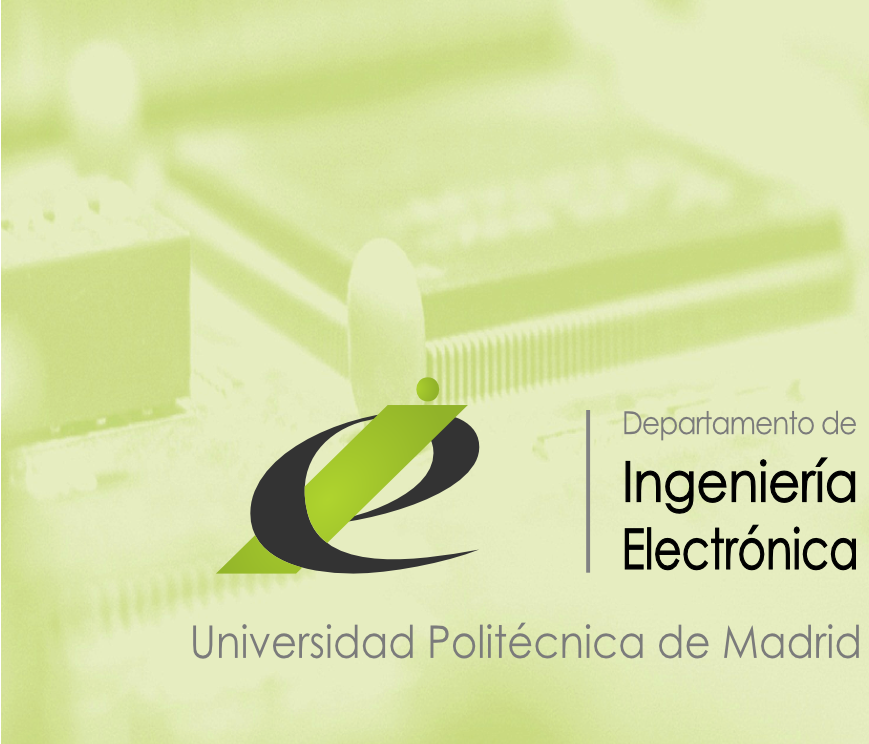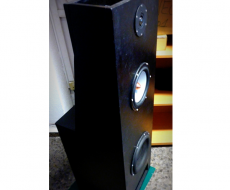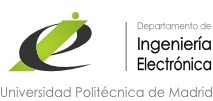MISE Welcome session

Welcome session for MISE (IE's master programme) at "sala de profesores" C building first stage
The invited speaker at the session is the technology enterprise BQ http://www.bqreaders.com/
Creada la Cátedra bq promovida desde el IE

New Master in Materials Engineering

New Master in Materials Engineering, in which this department participates and is coordinated by the ETS department of Civil Engineering School has been verified by "ANECA". This Master will start next September.
Master en Ingeniería de Materiales verificado

El Programa de Master en Ingeniería de Materiales, en el que participa nuestro Departamento y que coordina la ETS de Ingenieros de Caminos, Canales y Puertos, ha recibido urecientemente n informe favorable de la ANECA, por lo que definitivamente este Master comenzará a impartirse a partir del próximo mes de Septiembre.
DISE Verificado
El Programa de Doctorado en Ingeniería de Sistemas Electrónicos (DISE) ha sido aprobado el pasado 30 de Julio por la ANECA.
Dicho Programa ha sido promovido por el Departamento de Ingeniería Electrónica para dar continuidad al actual Programa de Doctorado en Sistemas Electrónicos, que cuenta con Mención de Calidad, a la vez que se adapta a los nuevos requisitos legales (RD 99/2011).
El DISE iniciará su andadura en el curso académico 2013-14.
Conferencia DCIS 2013
DCIS 2013 es la XXVIII edición de la "Conference on Design of Circuits and Integrated Systems" que tendrá lugar en San Sebastián. Desde sus orígenes, hace más de tres décadas, como conferencia de ámbito nacional, se expandió hasta llegar a ser un punto de encuentro internacional. La organización y sede de celebración viene rotando entre Grupos de investigación de España, Francia y Portugal, con asistentes de múltiples países.
Advanced Instrumentation (INST 1)
INTRODUCTION
BASIC SYSTEMS DATA ACQUISITION
- Applications of converters in data acquisition systems.
- Data collection plates.
- Data loggers.
INSTRUMENTAL COMPACT AND DISTRIBUTED SYSTEMS
- Compact systems: instrumentation buses.
- Distributed systems: fieldbus.
- Some proprietary systems.
INTELLIGENT SENSORS
- Advanced sensors.
- Wireless sensors.
- Networks of sensors.
- Regulations.
VIRTUAL INSTRUMENTATION
- Principles and philosophy of virtual instrumentation.
- Systems based on commands (SCSI).
- Development graphical environments (LabView).
- Architectures (SICL, VISA, IVI).
- SCADA.
MEASURES, METROLOGY AND PATTERNS
- Introduction to the measure.
- Expression and calculation of uncertainties A and B.
- Propagation of uncertainties.
- Calibration and traceability. Introduction to employers.
- Accreditation, certification: standards
Teaching methodology
The methodology consists of classes in which they are presented and proposed to develop the issues students must solve cases and present the teacher and the rest of the class, debating the solution adopted. This system is intended to engage students in the techniques developed in this subject and are aware of the training needs they require.
In the section on Virtual Instrumentation, during classes will be held, as an exercise, use practices and program design in posts LabView LFI Laboratory of Electronic Instrumentation.
In summary, the main lines which includes the teaching methodology of the course are:
- Master classes.
- Presentation and discussion of papers.
- Problem solving.
- Labs in Virtual Instrumentation.
The evaluation will be done by assessing the work / problems proposed along the course, with a total weight of 60% of the final grade, and a final exam multiple choice with the remaining 40%.
In the valuation of the proposed work will be considered, apart from the technical aspects, the ability to present, explain and defend the chosen solutions to the teacher and the rest of the course.
B-105 "Ofelia", un altavoz nacido en el IE

Luis Gómez Durán, alumno de la ETSI de Telecomunicación de la Unieversidad Politécnica de Madrid, dirigido por Octavio Nieto-Taladriz, profesor del departamento de Ingeniería Electrónica, ha realizado su Proyecto Fin de Carrera en dicho Departamento sobre el diseño de un prototipo de altavoces que simulan una sala de audición y se ajustan de manera rápida y sencilla a las preferencias del usuario.
A modular data acquisition system for high resolution clinical PET scanners
En las últimas dos décadas, la Tomografía por Emisión de Positrones (PET) ha demostrado ser una modalidad clave para el estudio de la biología del cúncer y trastornos cardíacos, y para la realizaciún imágenes moleculares, una tecnica que permite la terapia individualizada de la enfermedad [Weissleder01]. La mejor característica de la PET es su sensibilidad: es la tecnica que proporciona imúagenes moleculares con la mayor sensibilidad, y las imúagenes de cuerpo entero que produce no pueden ser igualadas por otras modalidades [Hoh97, Chae07]. Por otra parte, la PET no proporciona referencias anatómicas, lo cual es un problema facilmente resoluble a traves de su integraciún o coregistro con la tomografía computarizada de rayos X (CT) [Lu07]. Ademas, en com- paraciún con otras modalidades de imagen, la PET se caracteriza por bajas estadísticas de conteo (es decir, desintegraciones por unidad de tiempo), lo cual generalmente limita la resoluciún de la imagen. Sin embargo, detectores con geometrías dedicadas permiten solventar ester problema, y producir exce¬lentes resultados [Humm03]. Dos ejemplos destacables de especializacion, que tomaremos como aplicaciones de referencia, son la Mamografía por Emision de Positrones (PEM) y la monitorizacion en línea de dosis en hadroterapia (in-beam PET o, brevemente, ibPET). Las amplias posibilidades de especializacion tienen, sin embargo, una con¬trapartida: es necesario el desarrollo de sistemas de adquisicion igualmente especializados, cuyo coste y prestaciones puede impedir de hecho conseguir las ventajas teúricas proporcionadas por una geometría dedicada. El objetivo de esta tesis doctoral es proponer una nueva arquitectura tecnologica flexible, capaz de obtener prestaciones similares al estado del arte en distintas aplicaciones, a traves de una plataforma de adquisiciún compacta y eficiente en coste, adecuada para PEM e ibPET. En primer lugar, se exploraran el estado del arte y los problemas que han evitado la amplia difusion de equipos PET dedicados en entornos clínicos. Es¬pecial atenciún se dedicara a las soluciones tecnologicas y las características de los escaneres PEM anteriores. Se revisara tambien la situation de losequipos ibPET, especialmente las prestaciones requeridas para soportar efi¬cazmente la planificación de tratamiento en hadroterapia. En segundo lugar, se tratara un diseño conceptual propuesto como solucion al problema. Se propondrán y justificaran diferentes alternativas, con el fin de maximizar la eficiencia de detection y minimizar el coste. A traves de una serie de prototipos intermedios, se implementaran y caracterizarán las opciones de disenño elegidas. Por ultimo, se propondráa el disenño e implementacioán de un prototipo final de sistema de adquisicioán. El equipo en cuestiáon integraráa y extenderaá la soluciones validadas con los prototipos anteriores. x La investigation llevada a cabo durante esta tesis ha permitido realizar un sistema de adquisicion, con prestaciones al estado del arte, apto para el uso de PET dedicado en el entorno clínico del paciente, y que apoyara la investigation en PEM e ibPET. Summary In the last two decades, Positron Emission Tomography (PET) showed to be a key modality to interrogate biology for cancer and cardiac disorders, and to perform molecular imaging, a technology that permits individualized therapy of disease [Weissleder01]. PET's best characteristic is sensitivity: it is the most sensitive tech¬nique for medical molecular imaging, and the whole-body images it produces are unequalled by any other modality [Hoh97, Chae07]. Of course, it lacks anatomical reference, but this is a problem that can be easily overcome with X-ray (CT) (Computed Tomography) integration or coregistration [Lu07]. Moreover, even if PET uses relatively low statistics with respect to other modalities, which generally limits image resolution, it can produce excellent results by using dedicated detector geometries [Humm03]. Two remarkable examples for this kind of system specialization, that we will take as refer¬ence applications, are Positron Emission Mammography (PEM) and in-beam PET (ibPET) for dose delivery monitoring in hadrontherapy. However, the wide range of design possibilities has a counter effect: it re¬quires the development of specifically tailored acquisition systems, whose cost and performances could actually prevent the achievement of the theoretical advantages obtainable with a specialized detector assembly. This doctoral thesis aims at proposing an alternative technological archi¬tecture, able to achieve state of the art PET imaging performances by means of a compact, cost efficient acquisition platform, suitable for its adoption in both PEM and ibPET. Firstly, the state of the art and the controversies that prevent the broad use of dedicated PET in clinics will be explored. Special attention will be paid to the technological solutions and characteristics of previous PEM scanners. It will be also reviewed the current status of ibPET, with particular focus on the performances required to effectively support treatment planning in hadrontherapy. Secondly, a conceptual design solution will be discussed. Various alter-natives will be proposed and justified, with the aim of maximizing detection efficiency and minimize system cost. Through a series of intermediate pro¬totypes the various design choices are implemented and characterized. Thirdly, a final prototype of the acquisition system is designed and im¬plemented. This piece of hardware integrates and extends the solutions that have been validated through the previous systems. The research carried out during this thesis has allowed realizing a state of the art acquisition system that is suitable for specialized PET imaging in the clinical environment of the patient, and that will be used for further research in PEM and ibPET imaging.
IE's Master's programme nº 1 in Electronics
The supplementary section “Special Ránking” of the economics newspaper Expansión (at June 19th 2013) faetures the document “250 Master's and MBA Guide”, proposes a selection of 250 Master's programmes “after a deep study of more than 1.000 programmes”, according to 26 criteria.





